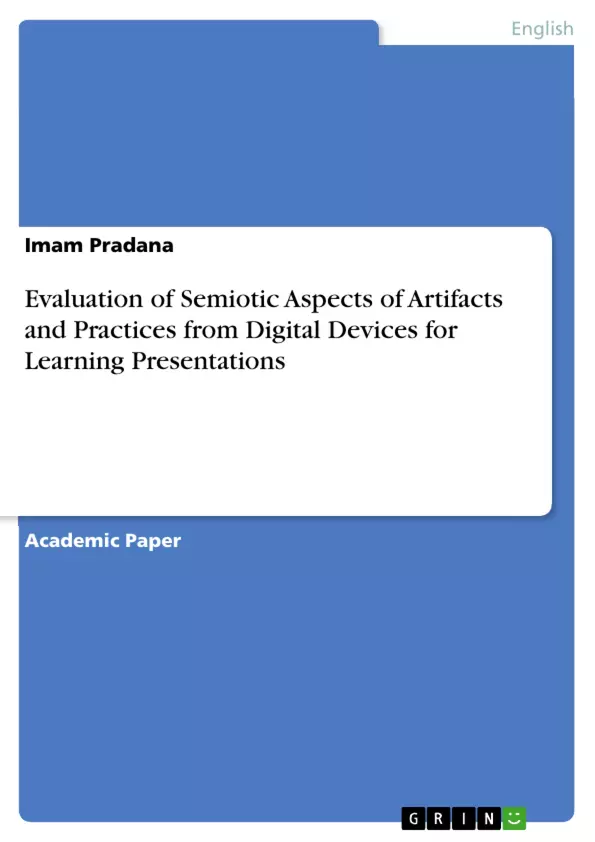This study aims to evaluate the semiotic aspects of artifacts and semiotic practices from three digital tools that are often used in learning presentations, namely Prezi, Canva, and PowerPoint. Through a semiotic approach, this study explores the visual signs, symbols, and representations used in the three devices, as well as analyzes how these signs are used in learning contexts. Then evaluate the similarities and differences in the semiotic aspects of technology.
Inhaltsverzeichnis (Table of Contents)
- Abstract
- Introduction
- Digital Devices
- Artifact Semiotics
- Semiotic Practice
- Methodology
- Data Collection
- Observation Method
- Semiotic Analysis
- Semiotic Practice Evaluation
- Results and Evaluation
- Prezi
- Canva
Zielsetzung und Themenschwerpunkte (Objectives and Key Themes)
This study evaluates the semiotic aspects of artifacts and semiotic practices used in three digital tools commonly employed for learning presentations: Prezi, Canva, and PowerPoint. It uses a semiotic approach to analyze the visual signs, symbols, and representations employed by these devices, along with their application in learning contexts. The study further evaluates the similarities and differences in the semiotic aspects of these technologies.
- Semiotic analysis of digital artifacts for learning presentations.
- Evaluation of the effectiveness and relevance of semiotic practices in educational contexts.
- Comparison of the semiotic aspects of Prezi, Canva, and PowerPoint.
- Exploration of the relationship between semiotic elements and user experience.
- Understanding the role of visual communication in learning presentations.
Zusammenfassung der Kapitel (Chapter Summaries)
The Introduction chapter provides an overview of digital devices, artifact semiotics, and semiotic practice. It defines digital devices and their role in modern society, introduces the concept of artifact semiotics, and explains the practice of semiotics in analyzing signs and meaning.
The Methodology chapter details the data collection and analysis methods used in the study. The chapter describes the observation method employed to collect data on the use of Prezi, Canva, and PowerPoint in learning presentations. It then explains the semiotic analysis used to interpret the collected data and evaluate the semiotic practices.
The Results and Evaluation chapter presents the findings of the study, focusing on the semiotic aspects of Prezi and Canva. The chapter discusses the unique features of each tool, their strengths, and weaknesses in terms of visual communication and user experience.
Schlüsselwörter (Keywords)
The primary keywords and focus topics of this study include artifact semiotics, semiotic practice, digital devices, learning presentations, Prezi, Canva, PowerPoint, visual communication, user experience, interface design, and semiotic analysis.
- Quote paper
- Imam Pradana (Author), 2023, Evaluation of Semiotic Aspects of Artifacts and Practices from Digital Devices for Learning Presentations, Munich, GRIN Verlag, https://www.grin.com/document/1367282



